#tutankhamun’s tomb
Text



The Shrine of Anubis as discovered within Tutankhamun's tomb, with original linen wrappings and garlands still present. Photographed by Harry Burton, 1926.
3K notes
·
View notes
Text

May your soul live, achieving millions of years, you who love Thebes, sitting with your face to the north wind, your eyes beholding happiness - inscription on the "wishing cup" lotus chalice, the first object encountered inside the antechamber of KV62
#happy belated 100th rediscovery anniversary king#aight so everything is based on objects from the tomb#thats The Duck Tunic#its number is 050a#it is adult sized#going on vogelsang-eastwoods colour reconstruction (its faded over 3300 yrs)#duckie sandals 021f and g based on veldmeijers reconstruction they are also adult sized#diadem and meteroric iron dagger and flexible inlaid apron were all found on his mummy#ring on his left hand is the kneeling king presenting maat one which was found on that finger of his mummy#holding the lotus chalice obvs#staff is based on the ones the guardian statues have#sash is based on 100f an Amarna style belt#openwork belt buckle (alleged) whose number i dont remember#bracelets were found on his mummy#no wig was found in the tomb so its based on his depiction on the golden throne#shebiu collar and broad collar also from the tomb and the shebiu is the correct colours i tried to make the collar correct too#anyway u get the idea#ancient egypt#my art#tutankhamun#archaeology#described in alt text#oh and the hieros say the good god nebkheperure the son of ra tutankhamun#given life forever
1K notes
·
View notes
Text
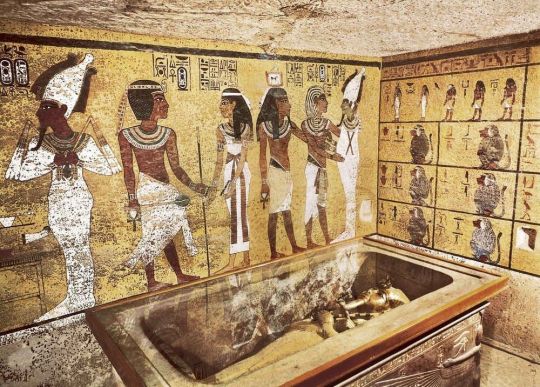
‘Curse’ Behind King Tutankhamun’s Tomb Mysterious Deaths Finally Solved
The unsettling curse of King Tutankhamun’s tomb in Egypt has bewildered archaeologists since it’s been feared to be linked to the mysterious deaths of multiple excavators who discovered it in 1922.
However, a scientist now claims to have solved the mysteries of the infamous “Pharaoh’s Curse” more than 100 years later.
Toxic levels of radiation emanating from uranium and poisonous waste are believed to have lingered inside the tomb since it was sealed over 3,000 years ago, Ross Fellowes wrote last month in the Journal of Scientific Exploration (JSE).

The burial chamber in the tomb of Tutankhamun, near Luxor, Egypt.
The radiation level inside Tutankhamun’s tomb is so high that anyone who comes in contact with it could very likely develop a fatal dose of radiation sickness and cancer.
“Both contemporary and ancient Egypt populations are characterized by unusually high incidences of hematopoietic cancers, of bone/blood/lymph, for which a primary known cause is radiation exposure,” Fellowes wrote in his study.
However, this radioactivity isn’t isolated to Tutankhamun’s tomb.
Fellowes revealed that “unusually high radiation levels have been documented in Old Kingdom tomb ruins” and spread throughout sites in Egypt.
“Radiation has been detected by the Geiger counter at two sites at Giza adjacent to the pyramids,” he wrote, adding that radon — a radioactive gas — has also been detected in “several underground tombs at Saqqara.”
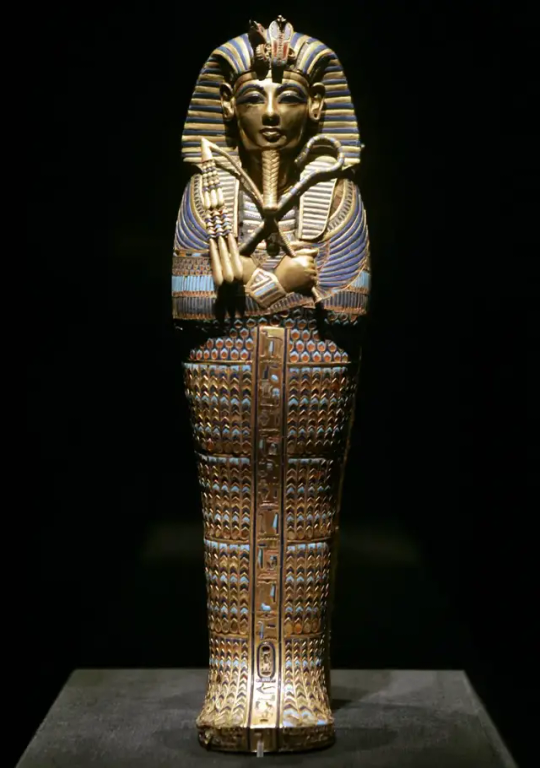
The “Coffinette for the Viscera of Tutankhamun,” which contained the king’s mummified liver, depicts him as Osiris, holding a crook and flail.

Medical imagery of Tutankhamun is shown above a replica of King Tut’s skull on display during the “Tutankhamun And The Golden Age Of The Pharaohs” at the Los Angeles County Museum of Art in California.
These readings were all found to be “intensely radioactive.”
“Modern studies confirm very high levels of radiation in ancient Egyptian tombs, in the order of 10x accepted safety standards,” the study shared.
It’s also theorized that those who built the ancient tombs were aware of the toxins based on the eerie warnings carved on the walls.
“The nature of the curse was explicitly inscribed on some tombs, with one translated presciently as, ‘they that break this tomb shall meet death by a disease that no doctor can diagnose,’” Fellowes wrote.
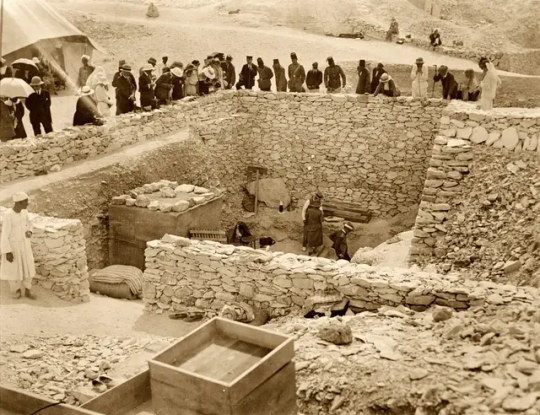
Outside the tomb of Tutankhamun during the 1922 excavation in the Valley of the Kings in Egypt.
Other ominous translations like “forbidden” because of “evil spirits” may have significantly fueled the fear that supernatural curses lingered in the ancient sites.
Those fears intensified with the mysterious deaths of Lord Carnarvon, who funded the excavation in 1922 and reportedly walked through the treasured filled rooms — and multiple others after they unsealed the tomb.
“Carnarvon was dead within a few weeks of the uncertain diagnosis of blood poisoning and pneumonia,” Fellowes wrote.
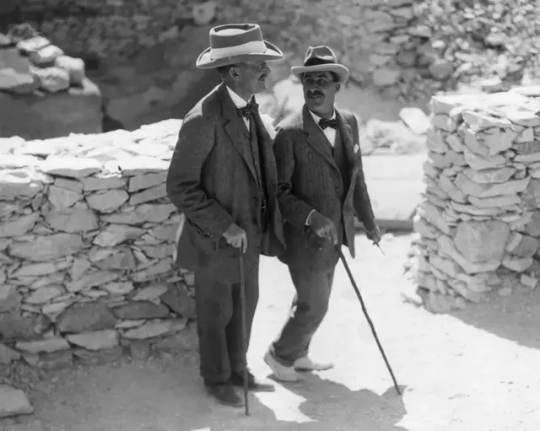
Egyptologist Howard Carter (R) walks with archaeologist Lord Carnarvon, the patron of his research, outside the tomb of King Tutankhamun in 1922.
Egyptologist Arthur Weigall allegedly told colleagues that Carnarvon would “be dead within six weeks” upon entering, the study claimed.
Howard Carter, the first person to walk inside Tutankhamun’s tomb with Carnarvon, died in 1939 after a long battle with Hodgkin’s lymphoma, which was suspected to be caused by radiation poisoning.
British Egyptologist and independent excavator Arthur Weigall was present at the opening of Tut’s Tomb and is also credited with starting the ‘myth’ of the curse.
He died of cancer at 54 years old in 1934.
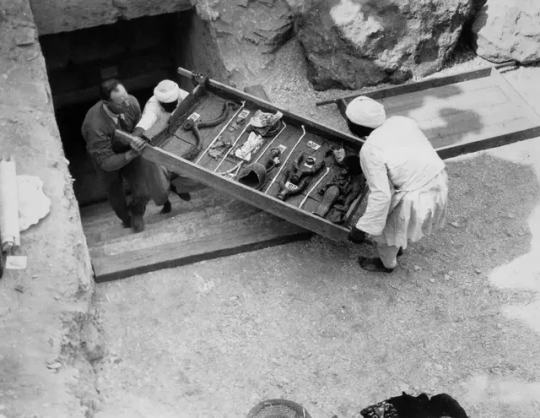
Workers remove a tray of chariot parts from the Tomb of Tutankhamun in the Valley of the Kings, Egypt, in 1922.
In total, six of the 26 people present when the tomb was opened died within a decade from asphyxia, stroke, diabetes, heart failure, pneumonia, poisoning, malaria and X-ray exposure.
While the deaths can be seen as odd, the curse theory was also likely fueled by the oddities that happened when it opened.
Carnarvon had reportedly suffered a mosquito bite that became severely infected.
Around the time excavators opened the tomb, Cairo reportedly suffered a bizarre power outage and a freak sandstorm, according to National Geographic.’
At one point during the excavation, Carnarvon’s favorite dog allegedly let out a chilling howl and suddenly dropped dead.
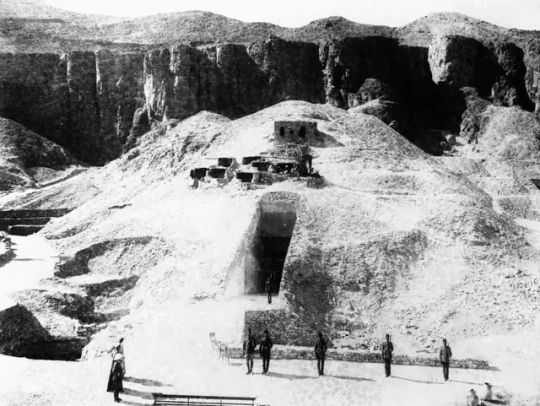
A photograph showing guards standing outside the tomb of Tutankhamun in Egypt in 1922.

A sacred cow being removed from Tomb of Tutankhamun in 1922.
From a historical perspective, the discovery of the tomb in the Valley of Kings is considered one of the most fascinating finds that gave modern society a glimpse into the Egyptian royalty voyage into the afterlife.
Five thousand items, including solid gold funeral shoes, statues, games, and strange animals, were discovered inside Tutankhamun’s tombs.
It would take the excavators ten years to clear the tomb of its treasure.
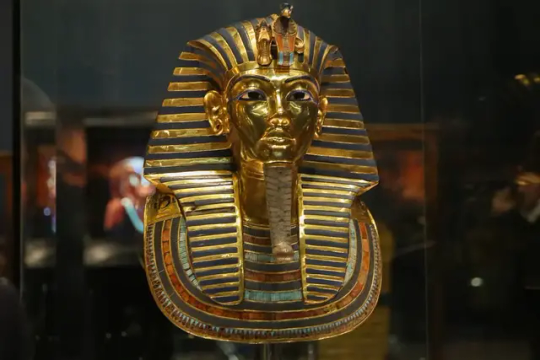
The golden funerary mask of Tutankhamun.
The unsealing and studying of the tomb is also credited with launching the modern era of Egyptology.
Tutankhamun took the throne as pharaoh around nine or ten years old and ruled between 1332 BC and 1323 BC.
However, he died by the time he turned 18.
There are no surviving records of Tutankhamun’s death and how the young pharaoh died remains a mystery.
However, Tutankhamun is suspected to have suffered from several health issues — likely linked to his father, Akhenaten, and his mother, Nefertiti, being brother and sister.
By Richard Pollina.
#‘Curse’ Behind King Tutankhamun’s Tomb Mysterious Deaths Finally Solved#King Tutankhamun#Pharaoh’s Curse#Old Kingdom#Valley of the Kings#Lord Carnarvon#Howard Carter#Egyptology#ancient artifacts#archeology#archeolgst#history#history news#ancient history#ancient culture#ancient civilizations#ancient egypt#egyptian history#egyptian mythology#egyptian pharaoh#egyptian antiquities#egyptian art
62 notes
·
View notes
Text

Original photo of the discovery of the tomb of Tutankhamun, 1922.
371 notes
·
View notes
Text
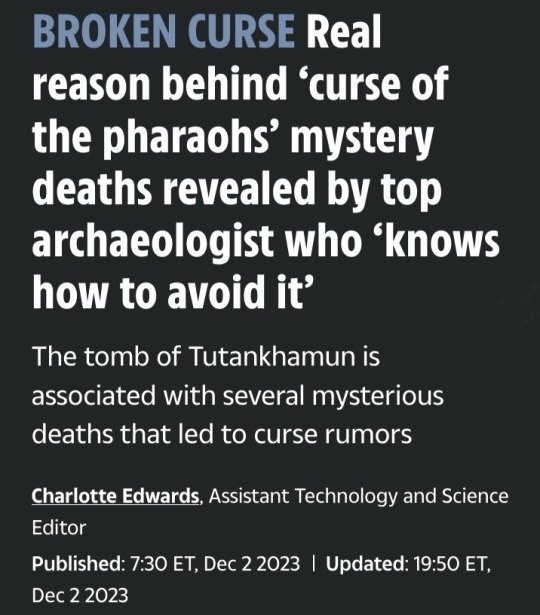
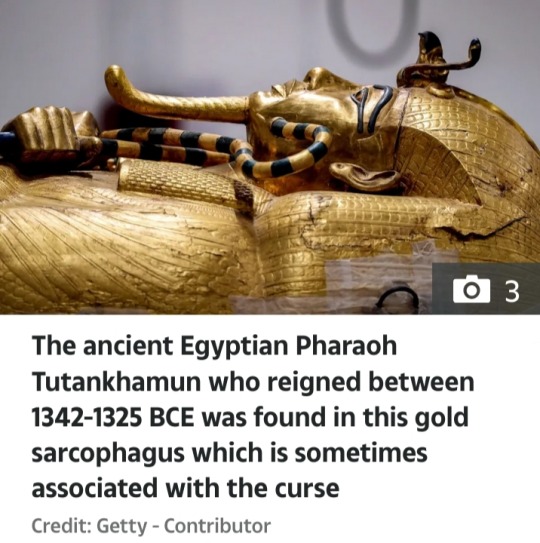
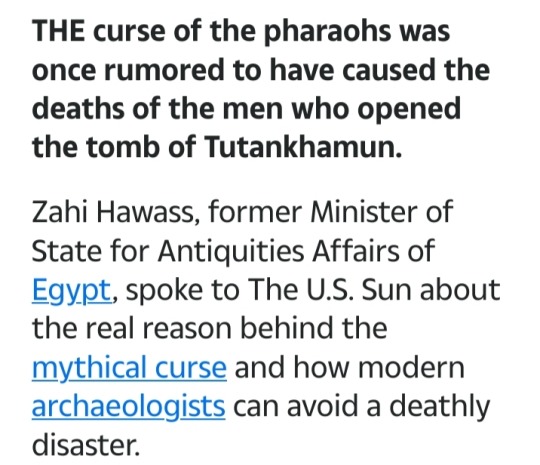
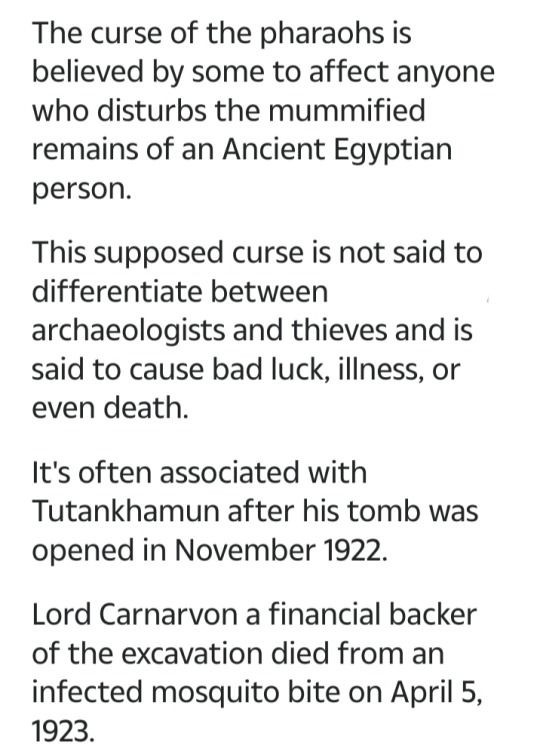
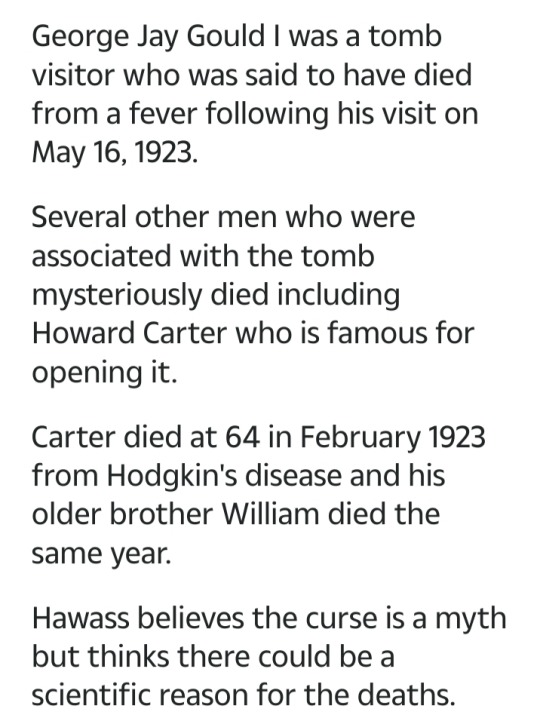
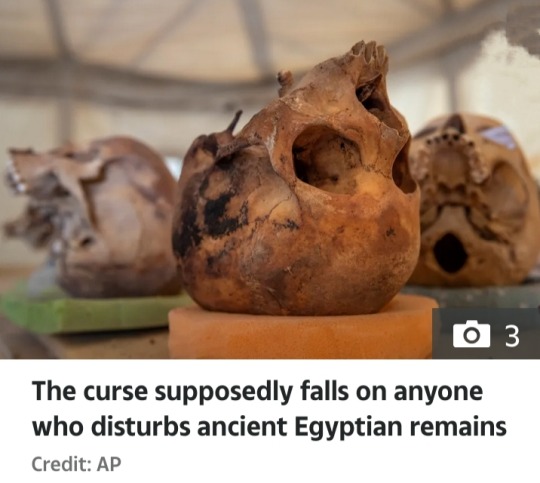
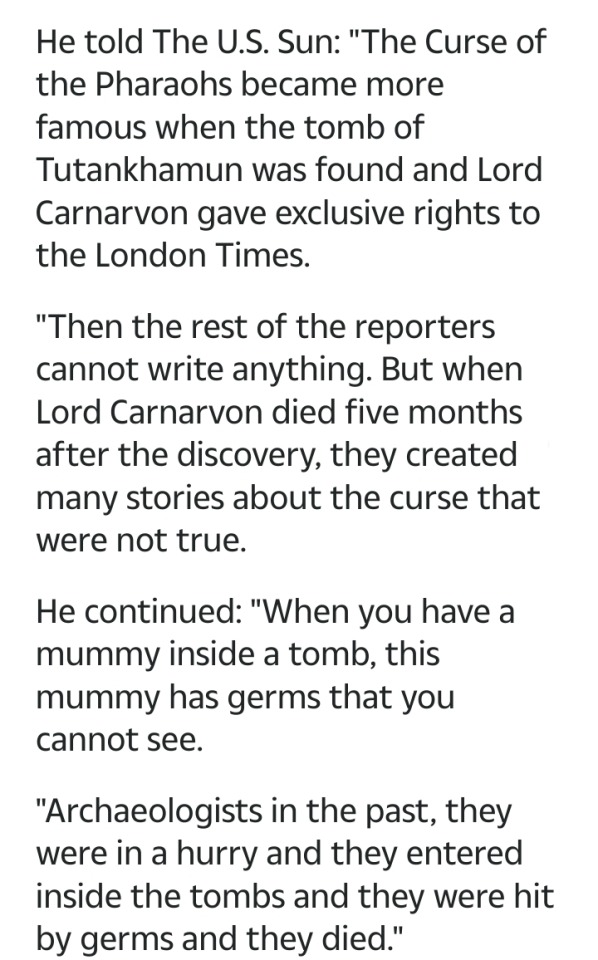
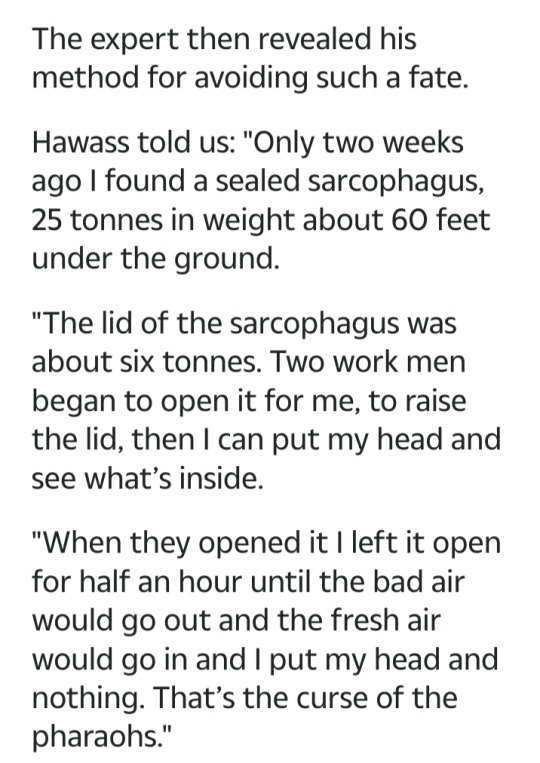

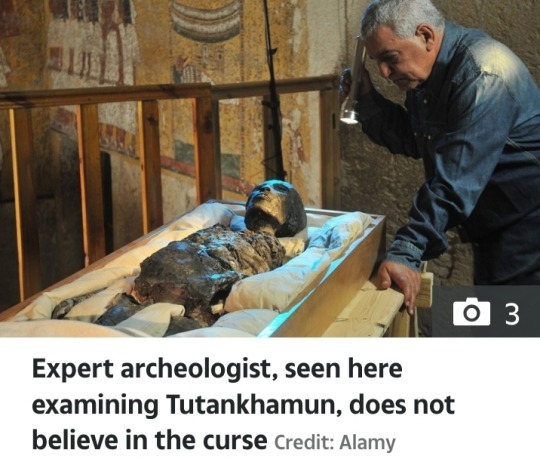
#Tutankhamun#Tomb of Tutankhamun#curse of the pharaohs#Ancient Egypt#Ancient Civilization#Dr Zahi Hawass#Minister of State for Antiquities Affairs#Egypt#mythical curse#archaeology#sarcophagus#mummified remains#Lord Carnarvon#Howard Carter#George Jay Gould I#mummies#germs#curse#Ancient Egyptian Pharaoh
59 notes
·
View notes
Text
The objects found in ancient tombs tell us a lot about the people they were buried with. Emperor Qin took his Terracotta Army with him to the grave while some Pharaohs took boardgames.
25 notes
·
View notes
Text
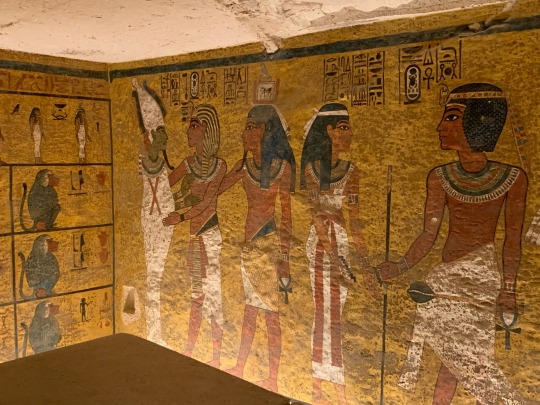
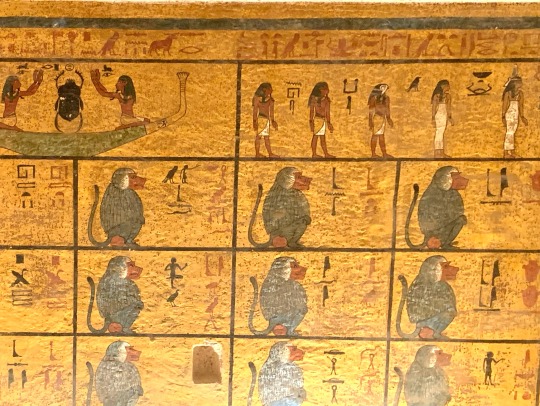
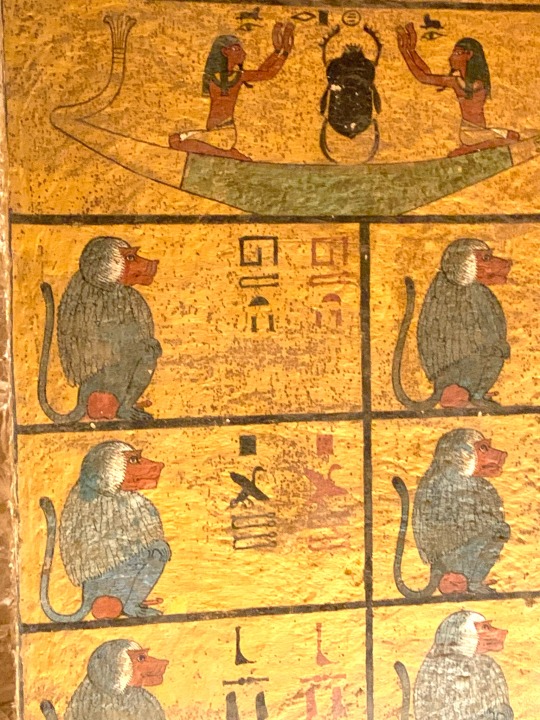
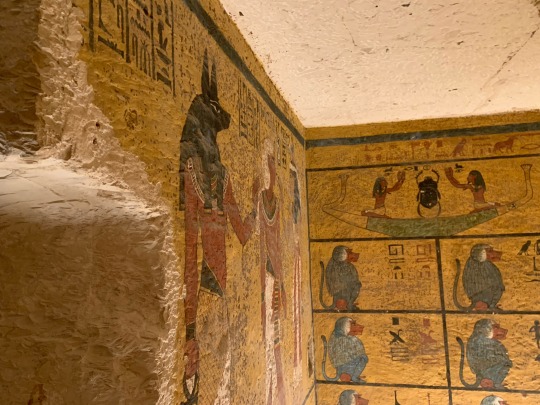
More images from inside the tomb of Tutankhamun
#tutankhamun#tomb#amarna#egypt#egyptian#pharaoh#pharaohs#ancient egypt#ancient egyptian#Kemet#Kemetic#kemeticism#valley of the kings
7 notes
·
View notes
Text

Tutankhamun tomb
#Tutankhamun tomb#tomb#sarcophagus#ancient egypt#ancient civilizations#death mask#corpse#mummy#pharaoh#pharaohs#tutankhamun#Tutankhamon#Tutankhamon tomb#Pharaoh Tutankhamun
99 notes
·
View notes
Photo
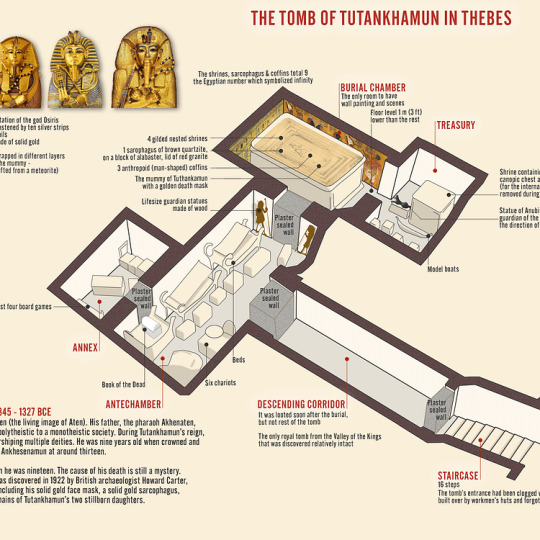
The Tomb of Tutankhamun in Thebes
An infographic depicting the tomb layout and location of the Egyptian New Kingdom pharaoh Tutankhamun (c. 1345 - 1327 BCE). Tutankhamun died when he was nineteen and the cause of his death is still a mystery. His tomb was discovered relatively intact in 1922 by British archaeologist Howard Carter.
78 notes
·
View notes
Text
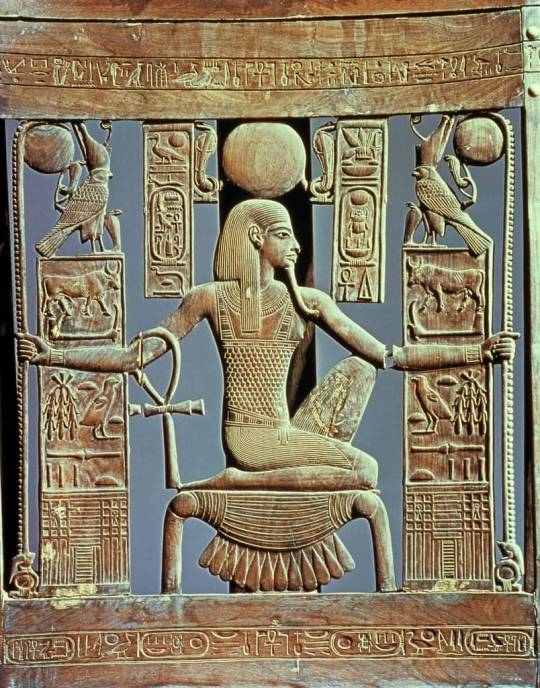
Back of a chair from the tomb of Tutankhamun
98 notes
·
View notes
Photo

The intact seal on Tutankhamun’s Tomb, 1922. It went untouched for 3,424 years.
52 notes
·
View notes
Text




Buried in his jammies 🎶
#king tut#tutankhamun#tomb#mummy#born in arizona moved to babylonia#cute they had the blanket up to his chin so you cant see where his head snapped off when they tried to remove him from his coffin#egypt#vacation#personal#iron maiden#powerslave#gpoy#selfie#me
7 notes
·
View notes
Text






Truth or Scare | The Curse of Tutankhamun
“An Egyptian pharaoh entombed with a priceless fortune some 3000 years ago. 1500 years before the birth of Christ, kings of Egypt known as pharaohs were buried in the valley of the kings. A land riddled with age ol mysteries that continue to fascinate us to this day.”
#truth or scare#tutankhamun#king tut#mummies#Egypt#tombs#ancient egypt#spooky#horroredit#michelle trachtenberg#paranormal#Halloween#tv show
47 notes
·
View notes
Photo
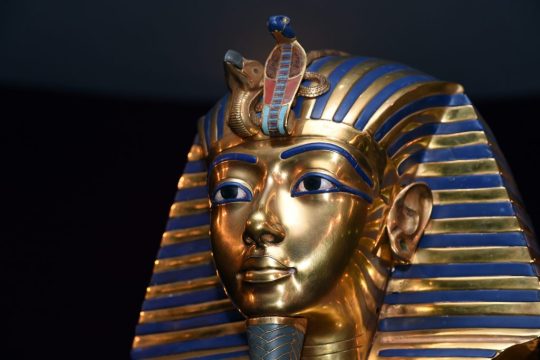
The 5 Most Opulent Artifacts Found in King Tut’s Inner Tomb
All that glitters is sometimes gold—particularly when it comes to the tomb of King Tutankhamun.
There is perhaps no other period in human history that has captured minds and imaginations quite like ancient Egypt. “Egyptomania,” or the intense interest in all thing Egypt, was first sparked by Napoleon’s Egyptian Campaign at the turn of the 19th century. Throughout the 1800s, people across the world emulated the architecture and design of Egyptian culture—for example, Victorian-era jewelry frequently incorporated scarabs, and cartouches and monuments across Europe took the form of obelisks.
The pervasive obsession with Egypt reached an apogee when on November 26, 1922, archaeologist Howard Carter and his team discovered the doorway to the tomb of Pharaoh Tutankhamun (commonly referred to as King Tut) in the Valley of the Kings on the west bank of the Nile. Though archaeological digs had been undertaken throughout the area, most tombs had succumbed to looting and grave robbing, leaving them stripped bare of their original contents. Tut’s tomb, however, had been hidden by debris and rubble, preserving it to near perfect condition.
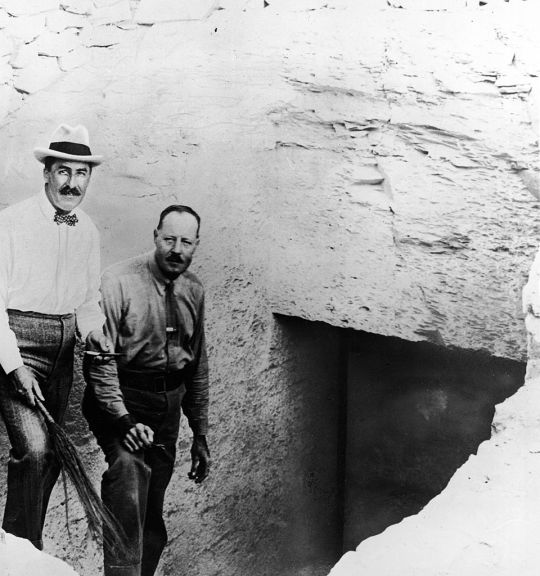
Despite discovering King Tutankhamun’s tomb in late 1922, it took several months for archaeologists to work their way through and catalogue the contents within the outer chambers. On February 16, 1923, Carter finally came face-to-face with the doorway leading to the tomb’s inner burial chamber and unsealed it. What he and his team were met with was the most well-preserved and intact pharaonic tombs ever found. Over the following eight years, the items and goods contained therein were carefully catalogued and removed, and today are held in the collection of the Egyptian Museum in Cairo.
To mark the centennial of the unsealing of the burial chamber, we’ve gathered five of the most opulent and intriguing artifacts that were found in King Tutankhamun’s tomb.
Tutankhamun’s Sarcophagus and Three Coffins:

Seeing the sarcophagus was perhaps one of the most exciting moments for the archaeologists at the time, as it indicated early on that the contents were preserved and intact. Crafted of quartzite and red granite, and displaying the images of Isis, Nephthys, Neith, and Serqet, the sarcophagus housed three nesting coffins which held Tutankhamun’s mummified body. The outer two coffins are made of fully gilded wood and inlaid with glass and semiprecious stones, such as turquoise and lapis lazuli. The innermost coffin, however, is made almost entirely out of 110.4 kilos of solid gold, similarly adorned with inlaid stones, and incised with inscriptions and in the shape of Osiris holding scepter and flail.
The Death Mask of Tutankhamun

Found within the innermost coffin upon the mummified body, King Tut’s death mask has become a world-recognized icon of ancient Egypt and the pharaonic era. Composed of 10.23 kilos of solid gold, it depicts Tutankhamun wearing the traditional stripped pharaonic headdress replete with representations of the goddesses Nekhbet and Wadjet above his brow. The mask’s back and shoulders are inscribed in Egyptian hieroglyphs with a protective spell copied from the Book of the Dead, offering protection as the pharaoh moved through the underworld.
Canopic Shrine

In the process of mummification, many of the person’s organs are removed and placed in what are called canopic jars. These containers frequently included lids shaped after the heads of the Sons of Horus, protective deities. Like many other ancient Egyptian tombs, King Tut’s included an alabaster canopic chest containing the four separate jars. However, in the pharaoh’s tomb, these were housed in a canopic shrine. Standing at six-and-a-half feet tall and enrobed in gold, the shrine includes the figure of the goddess Nepthys who stands guard over the royal contents.
Golden Sandals
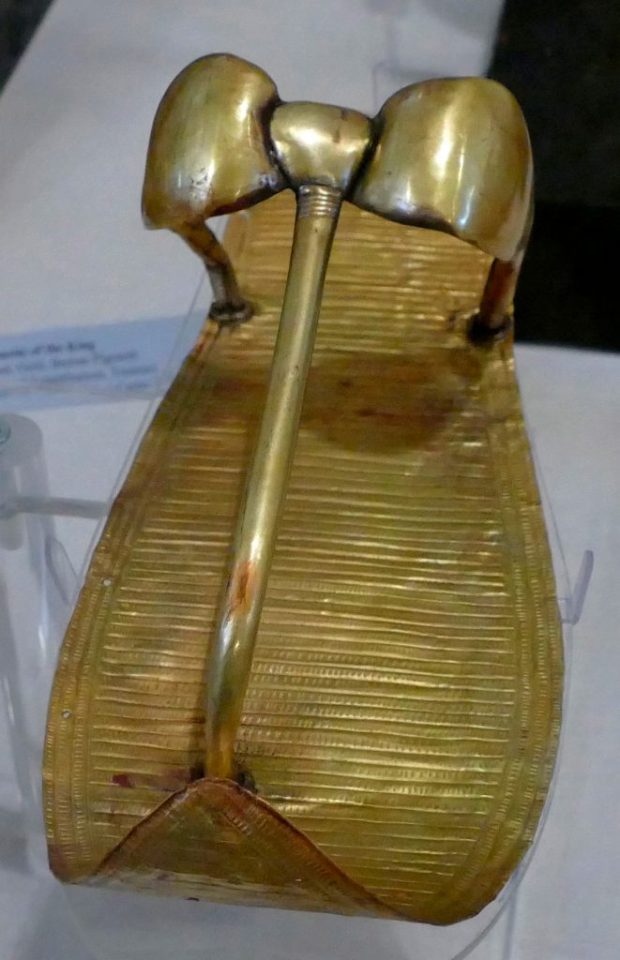
A large swathe of the items found in King Tutankhamun’s tomb represented personal necessities, such as clothing, toiletries like perfume, and food stuffs. Included among these items were a pair of gold sandals. These golden shoes have been found in numerous other ancient tombs, and it is believed that they were made specifically for funerary and burial practices. The soles of the shoes depict the nine traditional enemies of Egypt, including the Nubians and Libyans, symbolizing that as god-king they were literally beneath his feet.
Golden Chariot
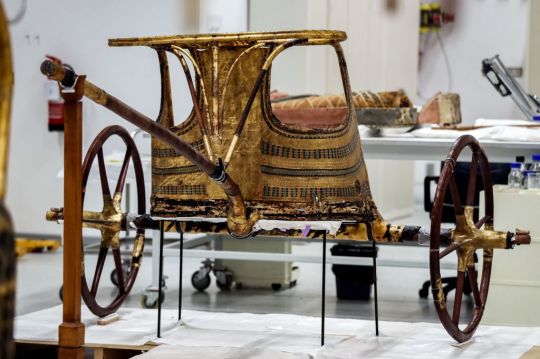
King Tutankhamun’s tomb contained a total of six golden chariots—though, unfortunately, all were in various states of disrepair as they were either mishandled or damaged by looters. After restoration, they were identified as typical D-cab chariots that were meant to be drawn by two horses. The image of a pharaoh driving a chariot was a common symbol of royal power and wealth, and in ancient times, pharaohs were often presented at public events in opulent chariots to highlight their status.
By Annikka Olsen.
#The 5 Most Opulent Artifacts Found in King Tut’s Inner Tomb#King Tutankhamun#Howard Carter#ancient tombs#ancient graves#ancient artifacts#archeology#archeolgst#valley of the kings#gold#treasure#history#history news#ancient history#ancient culture#ancient civilizations#ancient egypt#egyptian history#egyptian pharaoh#egyptian art
50 notes
·
View notes
Text
Without being flippant or ignoring the thread of colonialism that very well may have fed into his actions, to me the most impactful thing here isn't that Carter could have been unscrupulous, and that items associated with him may not have had proper provenance; it's the implication that Tutankhamun's tomb could have actually been a wholly intact one, never raided before it was opened by Carter and Carnarvon.
Some Egyptologists have challenged Carter’s claim that the tomb’s treasures had been looted in antique times. In 1947, in an obscure scientific journal in Cairo, Alfred Lucas, one of Carter’s employees, reported that Carter secretly broke open the door to the burial chamber himself, before appearing to reseal it and cover the opening.
Brier said: “They were suspected of having broken into the tomb before its official opening, taking out artefacts, including jewellery, sold after their respective deaths. It’s been known that Carter somehow had items, and people have suspected that he might have helped himself, but these letters are dead proof.
“He certainly never admitted it. We don’t have any official denial. But he was locked out of the tomb for a while by the Egyptian government. There was a lot of bad feeling, and they thought he was stealing things.”
In his book, he writes that the Egyptians were unable to prove their suspicions and were convinced, for example, that Carter had been planning to steal a wooden head of Tutankhamun found in his possession: “The Egyptian authorities had entered and inspected Tomb No. 4, which Carter and the team had used for storage of antiquities, and discovered a beautiful lifesize wooden head of Tutankhamun as a youth.
“It had been packed in a Fortnum & Mason crate but it had never been mentioned in Carter’s records of the finds, nor in the volume describing the contents of the antechamber…. Carter argued that it had simply been discovered in the rubble in the descending passage.”
(Although that wouldn't necessarily explain the expensive elements of larger artifacts that were broken off or oils and unguents that are talked about as missing. They would have had commercial value as objects in ancient times but nowhere near as much significance in the 20th century.)
#tutankhamun#tutankhamen#king tut#tomb of tutankhamun#howard carter#early archeology#ancient egypt#egyptology#bob brier
59 notes
·
View notes
Photo
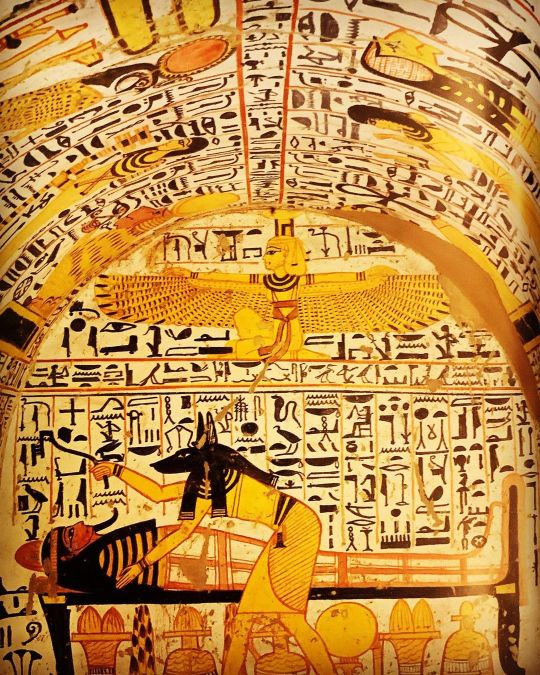
Howard Carter and his team of archaeologists found the entrance to the Tomb of Tutankhamun on this day in 1922. The tomb had sat largely undisturbed for over 3000 years. Here are a few of the impressive images from 𝐊𝐢𝐧𝐠 𝐓𝐮𝐭: 𝐓𝐡𝐞 𝐉𝐨𝐮𝐫𝐧𝐞𝐲 𝐓𝐡𝐫𝐨𝐮𝐠𝐡 𝐭𝐡𝐞 𝐔𝐧𝐝𝐞𝐫𝐰𝐨𝐫𝐥𝐝 (Cologne, 2018). Also, since it’s Feline Friday, look for bonus cat content. #kingtut #Tutankhamun #egypt #egyptology #tombs #ancientegypt #pharoahs #valleyofthekings #cats #cat #chat #katze #gatto #gatta #gata #gato #猫 #library #books #bookstagram #booksofinstagram #librarybooks #librarybook (at Harvard Yard) https://www.instagram.com/p/CkjSg-wuSkF/?igshid=NGJjMDIxMWI=
#kingtut#tutankhamun#egypt#egyptology#tombs#ancientegypt#pharoahs#valleyofthekings#cats#cat#chat#katze#gatto#gatta#gata#gato#猫#library#books#bookstagram#booksofinstagram#librarybooks#librarybook
27 notes
·
View notes